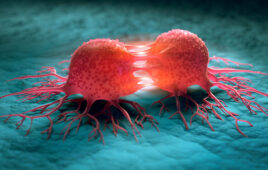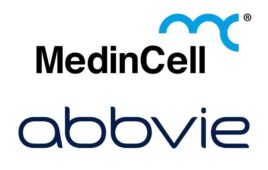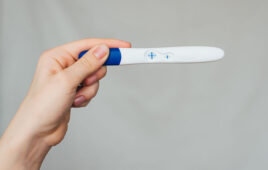Researchers are working on a number of ways to make mass spec more effective, and one could reduce the technology to postage-stamp size.
Catherine Shaffer
Shaffer is a freelance writer based in Ann Arbor, Mich.
Mass spectrometry is an incomparably powerful tool for drug discovery, and has both quantitative and qualitative value for many different applications. Although mass spec
 |
continues to improve in power and sensitivity, innovations in the technology are in specialized tools and applications for different uses within drug discovery research. Developments can be grouped into three broad categories: tools that minimize sample handling and preparation, tools that assist with data analysis, and tools that promote portability and versatility.
Sample handling and preparation are the most labor-intensive steps in a mass spec analysis. Often, two or more separation steps are necessary to obtain a pure enough sample. Many instruments on the market combine a chemical separation step in line with the mass spec to reduce this effort. One of the newest front-end labor-saving technologies on the market is a procedure developed by scientists at Shimadzu Corporation of Japan for identifying proteins directly from Western blots using robotic sample handling and a chemical inkjet printer (CHIP). Shimadzu scientists used the chemical printer to spot trypsin directly onto the Western blot membrane, digesting the proteins. They then applied the matrix solution and carried out the mass spec analysis directly from the membrane using matrix-assisted laser desorption/ionization time-of-flight mass spectrometry (MALDI-TOF).
From that blot researchers can get protein mass fingerprinting, or PMF data, or whole protein for any number of spots within one blot, says Shimadzu scientist Joseph Fox, PhD. “You can multiply what you can do with a single blot analysis. You can imagine not only looking for drugs or small molecule compounds, but also looking for biomarkers or protein work as well.” Shimadzu says the advantage of this method is that the mass data for a protein can be extracted from the same blot where it is originally identified, rather than running a new gel excising the band for mass spec preparation. In an imperfect world, the quest for the mass of an elusive band on a gel can sprawl out over months. The ability to extract PMF data from a Western blot has the potential to save time and eliminate human error.
Automation, robotics, and minimal sample handling are also features of Shimadzu’s new hybrid instrument, the LCMS-IT-TOF. This instrument uses a quadruple ion trap detector to focus ions before ejection into the TOF chamber, resulting in a highly enhanced sensitivity, according to the company. An LC/MS can be coupled with an autosampler as well to further streamline the mass spec work flow. “Mass spectroscopists want to do as little as possible to their samples before they put them on the mass spec,” says Chris Campbell, Shimadzu’s HPLC product manager. “The sample cleanup is where a lot of mass spec users are going.”
A second area of rapid innovation is in software packages that accompany mass spectrometry. Over the past several years, the instruments have increased in sensitivity and throughput, resulting in an avalanche of data that is very labor-intensive to analyze by hand. Applied Biosystems promotes its new Qstar Elite LC/MS/MS TOF mass
| Pocket Systems for Healthcare, Homeland Security One of the most intriguing areas of innovation in mass spectrometry is the effort to miniaturize systems to enhance portability and affordability. A miniature mass spec would have obvious and immediate benefits in the areas of homeland security and military applications, as well as airport security. However, a less widely celebrated application is the ability to bring a mass spectroscopic analysis to the clinic or even the bedside. Currently, many disease biomarkers have been identified, but few of these biomarkers are used in routine screening because of the prohibitive cost. However, if a handheld unit was available, disease conditions or predispositions could be diagnosed as easily as taking a patient’s blood pressure or an electrocardiogram. Last June, Georgia Tech’s Andrei Fedorov, PhD, announced the development of a miniaturized electrospray ionization (ESI) device for use with a mass spectrometer. The device was manufactured using techniques developed by the electronics industry for microelectrical mechanical systems (MEMS). ESI produces a large number of uniform droplets with charged proteins inside. The solvent evaporates as the droplets are transported, generating dry ions, which can be directed into an MS detector. The device developed by Fedorov and his collaborators, called “array of micromachined ultra sonic electrospray” (AMUSE), separates the droplet formation and ionization steps, permitting the use of much lower voltages. More importantly, the entire device is very small, making it highly portable and able to accommodate very low sample volumes (in the range of 10 µl). The AMUSE device is capable of handling many samples in parallel. “The entire device is about one inch by one inch,” says Fedorov. “It contains about 225 individual microunits on this system. They are not visible by the eye. The size of the opening is about three micrometers.” Functionally, the AMUSE device is the front end of a mass spectrometer and can be connected to a standard time-of-flight detector to complete the analysis of the vaporized ions. There are other efforts ongoing at other institutions to miniaturize the detector component. |
spectrometer as the most sensitive quadruple TOF on the market. Software features bundled with the instrument streamline the work flow and allow it to collect data more intelligently, according to the company. The Qstar, targeted at metabolite profiling, can reportedly acquire full scan MS data for up to seven precursor ions per second. Its independent data acquisition software features a proprietary algorithm called dynamic background subtraction (DBS), which makes the mass spectrometer “smarter” about choosing ions from which to collect data. The algorithm collects 20 survey scans and analyzes all ions present in those scans. From a regression line of intensity versus time, the ion with the greatest rate of increase can be chosen for MS/MS data collection.
A second data management technique is called mass defect triggered independent data acquisition (MDT IDA). This technique further reduces the number of compounds selected for MS/MS acquisition by comparing the mass defect of the metabolite with the mass defect of the parent compound in metabolite profiling.
Austria’s Biocrates Life Sciences has developed a platform that the company says can identify and quantify more than 1,000 metabolites at a time from fluid samples such as urine, plasma, or cell culture liquid. Using the Applied Biosystems instruments, Biocrates says it has gone beyond the AB-provided data filtering tools to provide a snapshot of an entire metabolome at one time. Coupled with front-end tools for minimizing and automating sample prep, the company has created a method for rapid and direct metabolomic analysis in a number of disease areas, says Biocrates CEO Armin Graber, PhD. The 15-employee company runs 500 samples a day, according to Graber. “We have selected metabolites, we know up front which settings, which biochemical pathways play a role, which diseases are relevant. We pre-annotate all our metabolic information,” he says.
“I did a lot of proteomics in a previous life. The big advantage for proteins is first of all there are so many different modification variants in the body. Even if you tried to analyze and identify them, if there is one higher up in abundance, the interpretation part is really tough . . . in metabo-lomics, it’s a functional endpoint. If the metabolite concentration is high, it’s high. If it’s the endpoint of a reaction, you know something is wrong in this reaction. It allows a more direct interpretation.”
Many companies will need to develop their own IT solutions if they want to go beyond the capabilities of the standard package. “No one has a target approach for more than 1,000 metabolites. Other companies have a couple of metabolites they’re targeting,” Graber says.
Thermo Electron Corporation, Waltham, Mass., unveiled an enhanced suite of proteomics tools for mass spectrometry in February. These include Pulsed-Q Dissociation (PQD), a fragmentation technique that solves the problem of low mass cut-offs for ion traps, and an extended version of their BioWorks software package, which incorporates reagent-based protein identification methods. A paper published in Nature Biotechnology in 2001 (vol. 19, pp. 946–951) details the identification of proteins in the microsomal fraction of human cell line HL-60. The goal of the experiment was to characterize changes in the cells from a nonadherent state to an adherent, spreading state after exposure to the chemical 12-phorbol 13-myristate acetate (PMA). Authors David K. Han, PhD, et al., carried out the procedure by covalently bonding the proteins to the isotope-coded affinity tag (ICAT) and analyzing them through automated tandem mass spectrometry using the SEQUEST data analysis tools. The authors write, “This represents the largest number of membrane or membrane-associated proteins identified to date and the first study in which the relative abundance of such proteins was directly and systematically determined.” Thermo offers a line of products for this technique, called quantitative protein profiling.
It’s clear that technical advances in mass spectrometry have outpaced developments in tools and applications, and that consumers are now interested in products that will help them streamline or automate their workflow, analyze their mountains of data, or expand mass spec applications into clinics and hospitals.
Filed Under: Drug Discovery



